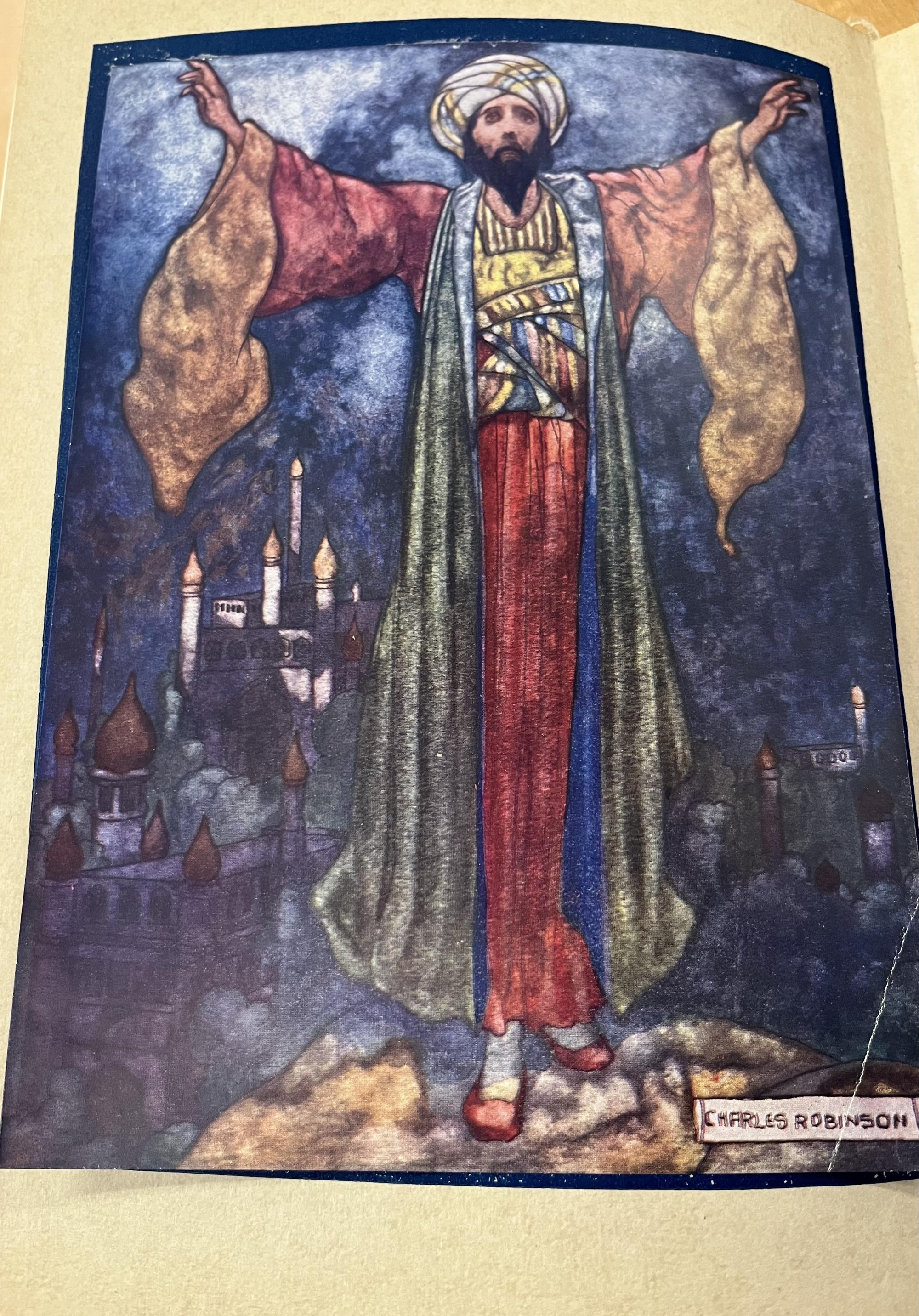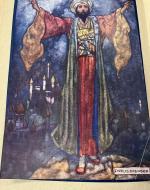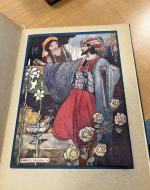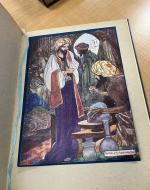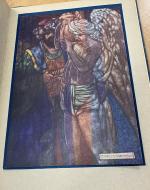Created by Pippa Balderas on Fri, 05/19/2023 - 17:46
Description:
This 1929 edition of the Rubáiyát of Omar Khayyám was published by London and Glasgow Collins’ Clear-Type Press. The most interesting thing to note is how there is almost no information surrounding this publishing company on the internet. The most direct information that I have found is, that Collins’ Clear-Type Press was a publishing company in Scotland, hence Glasgow a city in Scotland (The Author Conon Doyle Encyclopedia). To find any more information you have to do a lot of digging. The publishing company began by William Collins in 1819, which was originally called William Collins & Co. His son, William Collins II, continued his father’s publishing business and had his two sons help him, William and Alexander. The name changed to William Collins, Sons, and Co. William Collins III invented a machine to further production that “folded, gummed, and dried envelopes in one operation” (Archives Hub). It was not until 1900 that they started to publish children’s literature. But in 1906 William Collins III died, and his nephew William Collins IV took his place as chair in the company (Archives Hub). Despite being a part of this successful publishing company, William Collins III created his own company, Collins’ Clear Type Press. But that is about all there is about his company.
Other than the actual poem, in this edition two other people insert their own creative take on the famous poem: Laurence Housman and Charles Robinson. Housman was born in England where he was an artist and writer. He is widely known for his plays, multiple plays regarding the Victorian Era, with his most notable being Victorian Regina (Britannica, 2019). Given his background in poetry and interest/knowledge in the Victorian Era, Rubáiyát is right up his alley. His written introduction for the edition makes a lot of sense. For instance, numerous introductions for this poem just talk about Khayyám and FitzGerald and their history, but instead, Housman uses his space to write about the poem itself with its different variants, digging deeper into understanding the poem as a whole (for more on this visit “Gift Books and Orientalism” gallery in this exhibit).
Charles Robinson was also born in England. His father was an illustrator, and so were his brothers. He went to art school in his early education and even had an apprenticeship in art at Waterlow and Sons. He was greatly inspired by watercolors from Audrey Beardsley and Japanese artworks. He illustrated mainly fairy tales and children’s books. Later in life he even exhibited many of his works at the Royal Academy (Pook Press). His art style in the Rubáiyát shows greatly because of the saturated watercolors used in this edition, and the other-worldly feeling given to the viewer of these illustrations in the edition.
References:
Collins’ clear type press. Collins’ Clear Type Press - The Arthur Conan Doyle Encyclopedia. (n.d.). https://www.arthur-conan-doyle.com/index.php/Collins%27_Clear_Type_Press...’%20Clear%20Type%20Press%20was,written%20by%20Arthur%20Conan%20Doyle.
Records of William Collins, Sons and Co Ltd, publishers, Glasgow, Scotland. Archives Hub. (n.d.). https://archiveshub.jisc.ac.uk/search/archives/d257f8c2-0e3f-3fad-94c5-6...
Charles Robinson: Artist Biography, books and Illustration: Pook press. RSS. (2018, May 24). https://www.pookpress.co.uk/project/charles-robinson-biography/

